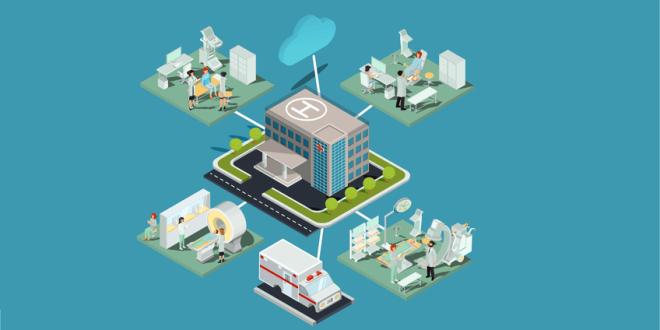As we all know, cloud computing has been a buzzword in the tech industry for quite some time now, and it has made its way into the healthcare sector as well.
And why not? With the promise of improved accessibility, enhanced data security, and cost savings, it’s no wonder that cloud computing has become an attractive option for healthcare organizations.
But as with any new technology, there are drawbacks that need to be considered as well. From potential data breaches to regulatory compliance concerns, it’s important to weigh the pros and cons before making the switch to cloud computing.
In this article, we’ll take a closer look at the benefits and drawbacks of cloud computing in healthcare, including case studies, and best practices for the implementation of cloud computing in healthcare.
So, let’s dive into the world of cloud computing in healthcare.
Benefits of Cloud Computing in Healthcare
Cloud computing has the potential to transform the healthcare industry, providing a range of benefits to healthcare organizations and patients alike.
Let’s take a closer look at some of the key advantages of cloud computing in healthcare:
Improved Accessibility and Convenience
One of the biggest advantages of cloud computing is that it makes healthcare data and services more accessible and convenient. Cloud-based solutions allow healthcare providers to access patient data from anywhere, at any time, using any device with internet connectivity.
This means that doctors and nurses can quickly and easily access patient information, test results, and other critical data, even when they’re on the go.
Enhanced Data Security and Privacy
Data security and privacy are major concerns in the healthcare industry, and cloud computing can help address these issues.
Cloud providers typically have more advanced security protocols and compliance frameworks in place than individual healthcare organizations, which can help to ensure that patient data is protected from unauthorized access or cyber-attacks.
Scalability and Flexibility
Cloud computing provides healthcare organizations with the ability to scale their IT infrastructure up or down quickly and easily, depending on their needs. This means that they can quickly add new services, applications, or users without having to invest in expensive hardware or software.
Cost Savings
By using cloud-based solutions, healthcare organizations can reduce their IT infrastructure costs significantly. Cloud providers typically offer a pay-as-you-go model, which means that healthcare organizations only pay for the resources they use, rather than having to invest in expensive hardware and software upfront.
Better Collaboration and Communication among Healthcare Providers
Cloud computing allows healthcare providers to collaborate more effectively, improving communication and information sharing among different departments and healthcare providers. This can lead to better patient outcomes, as healthcare providers can work together more efficiently and effectively.
Improved Patient Care and Outcomes
Ultimately, cloud computing can help improve patient care and outcomes by providing healthcare providers with the tools they need to deliver more personalized and effective care. By making patient data more accessible and secure, healthcare providers can make better-informed decisions and provide more accurate diagnoses and treatments.
Drawbacks of Cloud Computing in Healthcare
While cloud computing has many benefits, there are also some potential drawbacks to consider, especially when it comes to sensitive healthcare data.
Here are some of the key drawbacks to keep in mind:
Data Security Concerns
While cloud providers typically have more advanced security protocols in place than individual healthcare organizations, there is still a risk of data breaches or unauthorized access.
This is especially concerning when it comes to sensitive healthcare data, which can include everything from patient medical histories to payment information.
Regulatory Compliance Challenges
The healthcare industry is heavily regulated, and cloud computing can create additional challenges when it comes to compliance.
Healthcare organizations need to ensure that they are meeting all regulatory requirements when it comes to storing and sharing patient data, which can be complex and time-consuming.
Limited Control over Data Management
When healthcare organizations use cloud-based solutions, they are entrusting their data to a third-party provider. This can limit their control over how their data is managed and accessed, which can be concerning for some organizations.
Potential for Downtime or Service Interruptions
Cloud computing relies on internet connectivity, which can be disrupted by factors such as power outages or cyber-attacks. This can lead to service interruptions or downtime, which can be problematic for healthcare organizations that rely on cloud-based solutions for critical functions.
Limited Customizability and Compatibility
While cloud-based solutions offer scalability and flexibility, they can also be limited in terms of customizability and compatibility.
Healthcare organizations may have specific requirements or workflows that cannot be easily accommodated by off-the-shelf cloud solutions.
Case Studies of Cloud Computing in Healthcare
Cloud computing is becoming increasingly common in the healthcare industry, and there are many examples of organizations that have successfully implemented cloud-based solutions.
Here are a few case studies to illustrate the benefits of cloud computing in healthcare:
Mercy Health System
Mercy Health System, a large healthcare provider based in Missouri, implemented a cloud-based platform for their electronic health records (EHRs). This allowed them to centralize their patient data and make it easily accessible to healthcare providers across multiple locations. The cloud platform also provided advanced security features to protect patient data.
Johns Hopkins Medicine
Johns Hopkins Medicine, a leading healthcare organization based in Maryland, implemented a cloud-based clinical collaboration platform to improve communication and collaboration among their healthcare providers.
This platform allows doctors and nurses to securely share patient information and collaborate in real time, which has led to improved patient outcomes and reduced costs.
Mayo Clinic
Mayo Clinic, one of the most well-known healthcare providers in the world, has implemented a number of cloud-based solutions to improve its operations.
They use cloud-based analytics tools to analyze patient data and identify trends, as well as cloud-based scheduling software to manage their appointments more efficiently. They also use cloud-based communication tools to facilitate collaboration among their healthcare providers.
Best Practices for Implementing Cloud Computing in Healthcare
Implementing cloud computing in healthcare requires careful planning and consideration.
Here are some best practices to keep in mind when implementing cloud-based solutions in the healthcare industry:
Conduct a Thorough Risk Assessment
Before implementing cloud-based solutions, healthcare organizations should conduct a thorough risk assessment to identify potential security and compliance risks. This assessment should take into account all applicable regulations and standards, as well as any potential threats to patient data.
Choose a Reliable Cloud Provider
Choosing a reliable cloud provider is crucial for ensuring the security and reliability of healthcare data. Healthcare organizations should choose a cloud provider that has a proven track record of providing secure and reliable services, and that has experience working with healthcare organizations.
Ensure Data Encryption and Backup
Healthcare organizations should ensure that their data is encrypted both at rest and in transit and that they have regular backups in place to ensure data availability in the event of an outage or other disruption.
Train Employees on Data Security Best Practices
Healthcare organizations should train their employees on data security best practices to ensure that everyone understands their role in protecting patient data. This includes training on topics such as password management, email security, and phishing awareness.
Monitor and Manage Data Access
Healthcare organizations should carefully manage and monitor access to patient data, ensuring that only authorized personnel have access to sensitive information.
This includes implementing access controls and auditing data access logs to identify potential security breaches.
Develop a Disaster Recovery Plan
Healthcare organizations should develop a disaster recovery plan to ensure that they can recover from any potential disruptions or outages. This plan should include regular backups, redundant data storage, and a clear plan for responding to and recovering from any disruptions.
Conclusion
Cloud computing has both benefits and drawbacks when it comes to healthcare. While it can provide increased accessibility, security, and collaboration, it also poses risks in terms of data security, regulatory compliance, and potential downtime.
Despite the challenges, many healthcare organizations have successfully implemented cloud-based solutions, with positive outcomes for both patients and providers.
As healthcare continues to evolve, cloud computing will undoubtedly play a growing role in healthcare software development. By carefully considering the pros and cons, healthcare organizations can make informed decisions about whether cloud computing is the right choice for their needs.
 Posting Point
Posting Point

